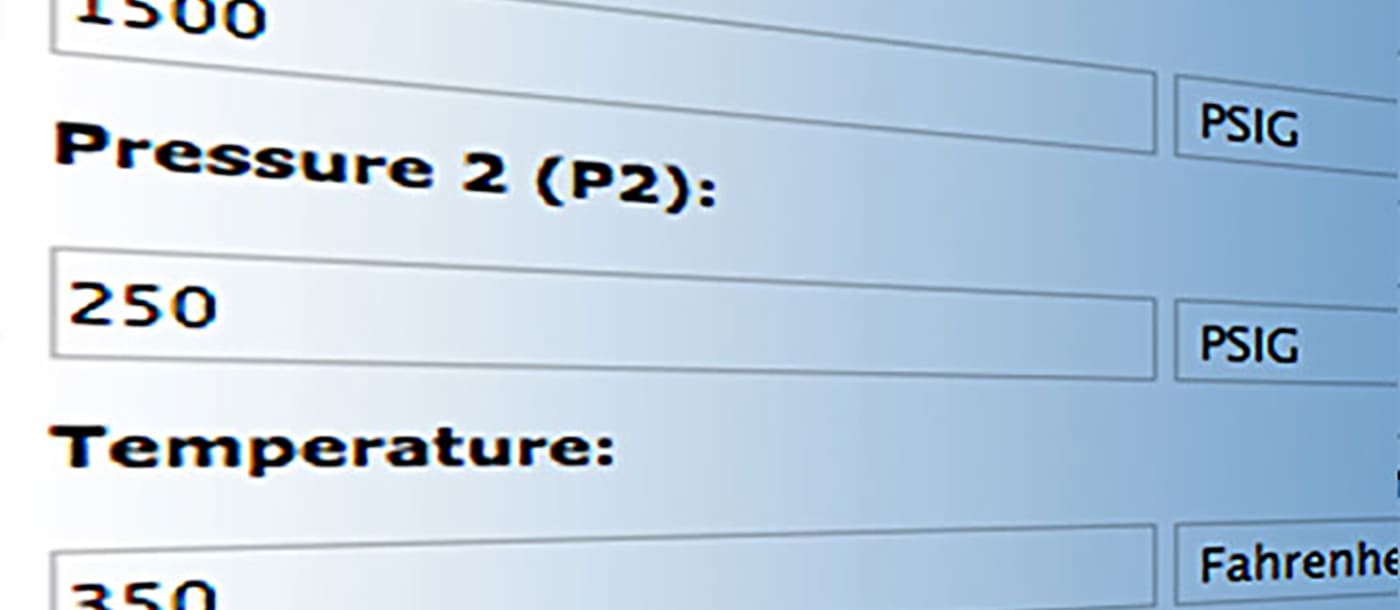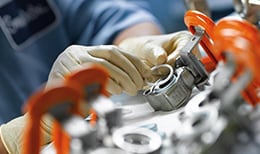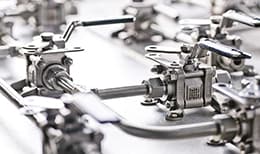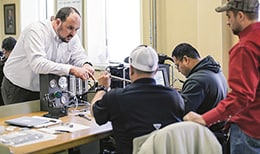
安全型圧力逃がし弁 PRVシリーズには5つの設定スプリング圧力範囲があり、工場で圧力設定、試験、ロック、タグ付けが行われるため、希望する設定を行うことができます。設定圧力を上回ると徐々に開き、設定圧力を下回ると閉じます。
その他の特徴:
- PED 2014/68/EU Category IVの認証を取得
- ISO-4126-1に準拠した安全バルブとして、Pressure Equipment Directive(圧力機器指令)に準拠したCEマークを取得
エンド・コネクション・アダプター(オプション)を使用すると、さまざまなシステム設定における取り付けの柔軟性が向上
仕様
| 最高使用圧力 | 41.3 MPa |
| 設定圧力 | 1.0~41.3 MPa |
| シール材質 | フルオロカーボンFKM、ニトリル |
Catalogues des soupapes de sécurité proportionnelles
Trouver des informations détaillées sur nos produits – matériaux de fabrication, pressions et températures nominales, options, accessoires, etc.
Features: Gas and liquid service; Working pressure: 6000 psig (413 bar); Set pressures from 145 to 6000 psig (10.0 to 413 bar); All 316L stainless steel construction; 1/4 through 1 in. NPT and ISO/BSP parallel thread end connections; Certified to PED 97/23/EC Category IV

Calculer le débit pour bien choisir une vanne
Utilisez notre calculateur de coefficient de débit (Cv) pour choisir une vanne d’une taille adaptée à vos besoins.
Utiliser l’outilSwagelok Resources Curated for You

How to Select the Right Valves for Your Industrial Fluid System
Learn how to apply the practical STAMPED method to select the valves most suited to your industrial fluid or sampling system design applications.

How to Isolate Industrial Fluid Systems with Block Valves
The isolation of industrial fluid system lines prior to maintenance is vital to plant safety. One of the safest ways to isolate a fluid system line is to install two block valves. Learn how to design proper configurations for your system.

Process Measurement – Impulse Line Best Practices
It can be difficult to identify issues within your process instrumentation application if you focus solely on the transmitter. Learn how to solve problems within your process instrumentation line with tips and best practices from Swagelok.

Closing the Manufacturing Skills Gap with a Well-Trained Team
With an aging industrial workforce nearing retirement, manufacturers are turning to younger generations to replace expert knowledge. Learn how to build an effective fluid system training program.
